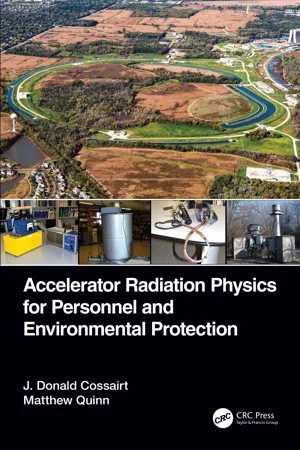
Accelerator Radiation Physics for Personnel and Environmental Protection
- 306 pages
- English
- ePUB (mobile friendly)
- Available on iOS & Android
Accelerator Radiation Physics for Personnel and Environmental Protection
About This Book
Choice Recommended Title, January 2020
Providing a vital resource in tune with the massive advancements in accelerator technologies that have taken place over the past 50 years, Accelerator Radiation Physics for Personnel and Environmental Protection is a comprehensive reference for accelerator designers, operators, managers, health and safety staff, and governmental regulators.
Up-to-date with the latest developments in the field, it allows readers to effectively work together to ensure radiation safety for workers, to protect the environment, and adhere to all applicable standards and regulations.
This book will also be of interest to graduate and advanced undergraduate students in physics and engineering who are studying accelerator physics.
Features:
-
- Explores accelerator radiation physics and the latest results and research in a comprehensive single volume, fulfilling a need in the market for an up-to-date book on this topic
-
- Contains problems designed to enhance learning
-
- Addresses undergraduates with a background in math and/or science
Frequently asked questions
(1.1) |
|---|
Table of contents
- Cover
- Half Title
- Title Page
- Copyright Page
- Contents
- Preface
- Acknowledgments
- Authors
- 1. Basic Radiation Physics Concepts and Units of Measurement
- 2. General Considerations for Accelerator Radiation Fields
- 3. Prompt Radiation Fields due to Electrons
- 4. Prompt Radiation Fields due to Protons and Ions
- 5. Unique Low-Energy Prompt Radiation Phenomena
- 6. Shielding Materials and Neutron Energy Spectra
- 7. Induced Radioactivity in Accelerator Components
- 8. Induced Radioactivity in Environmental Media
- 9. Radiation Protection Instrumentation at Accelerators
- Appendix: Synopses of Common Monte Carlo Codes and Examples for High-Energy Proton-Initiated Cascades
- References
- Index